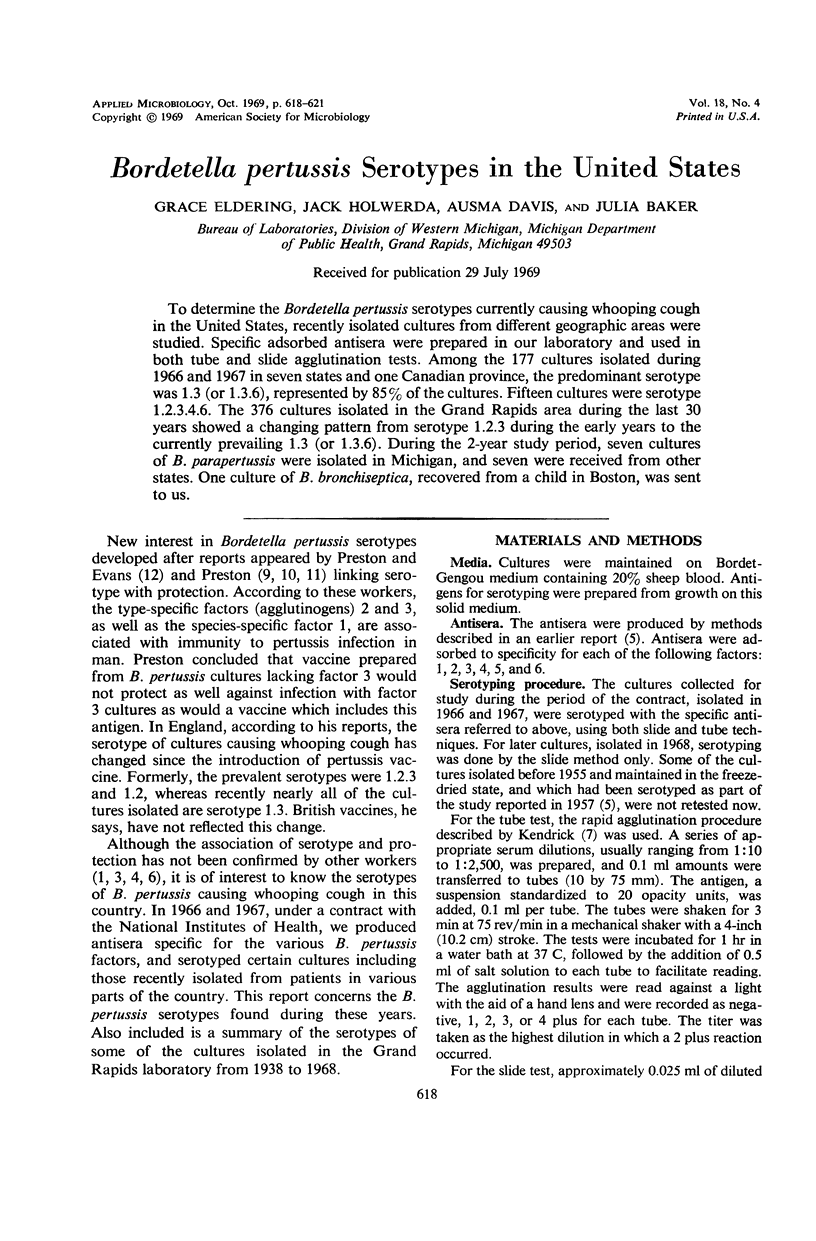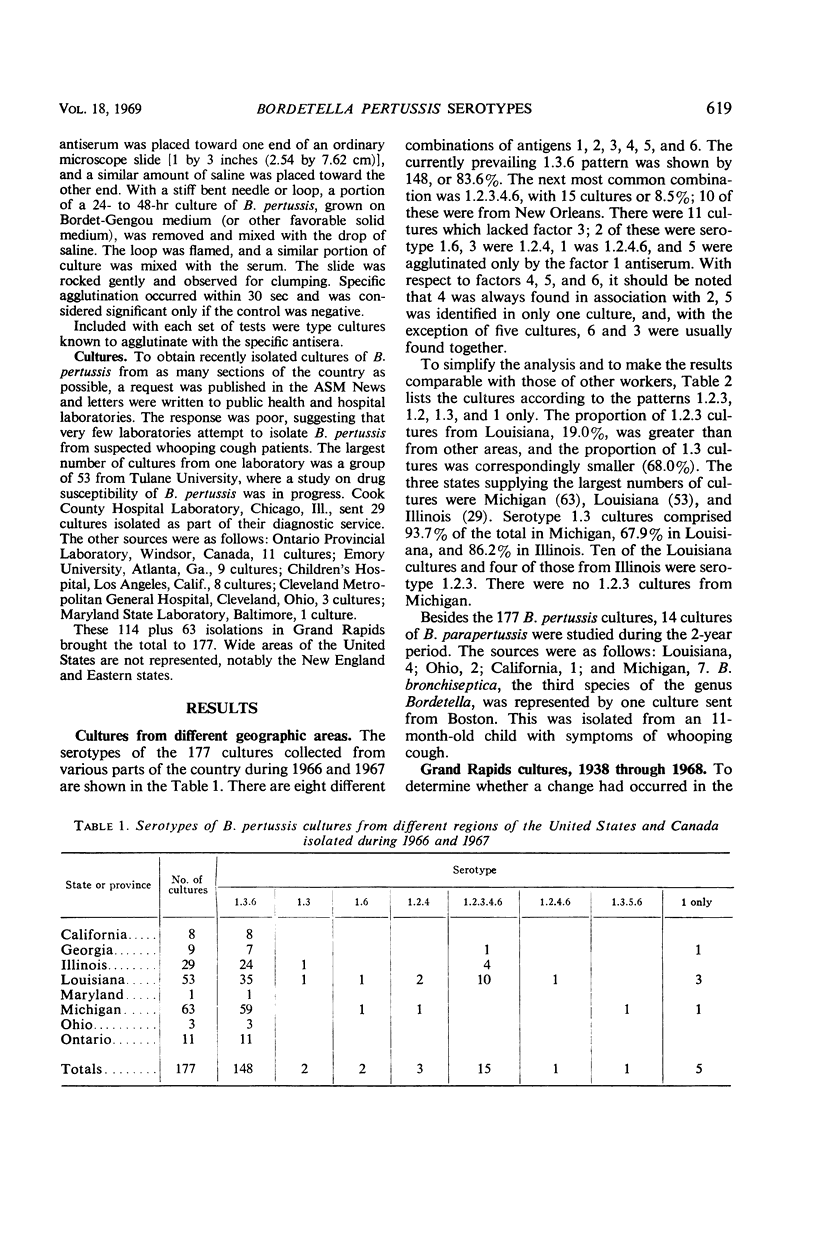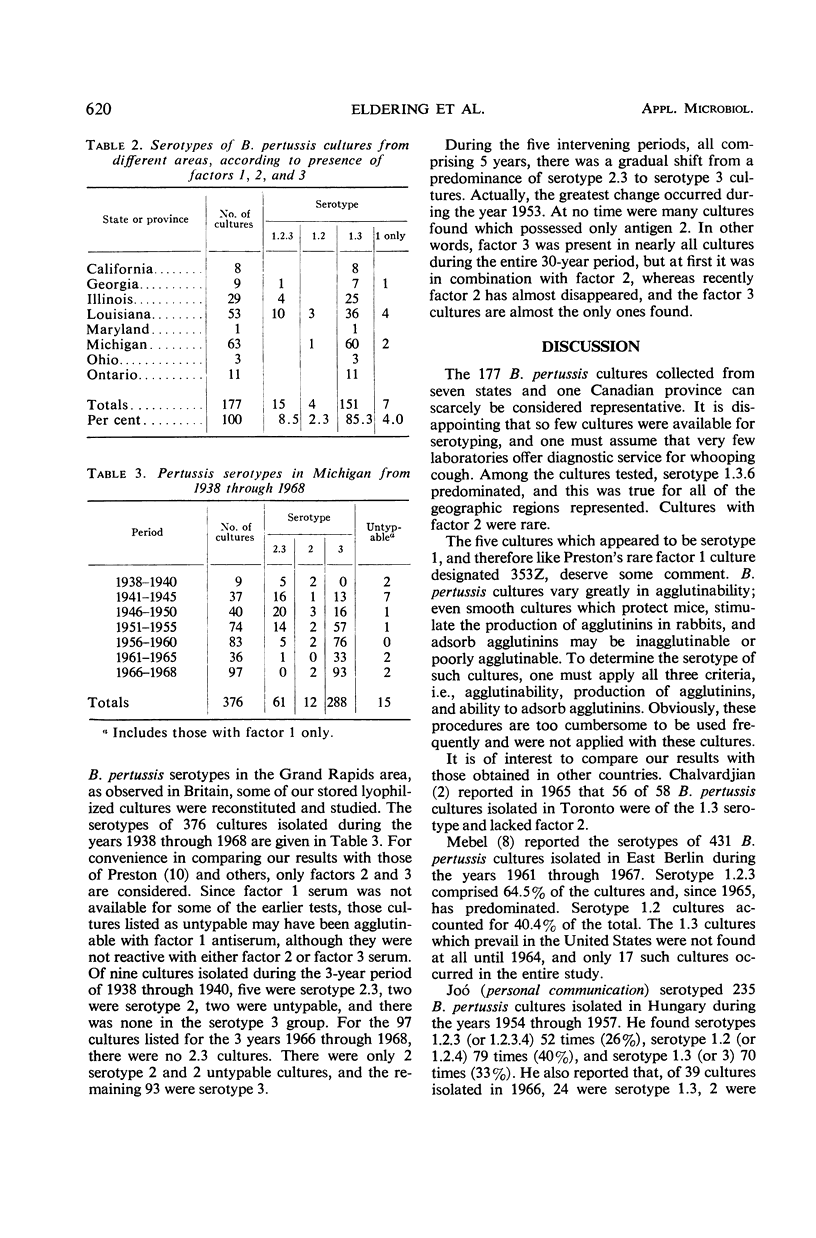Abstract
To determine the Bordetella pertussis serotypes currently causing whooping cough in the United States, recently isolated cultures from different geographic areas were studied. Specific adsorbed antisera were prepared in our laboratory and used in both tube and slide agglutination tests. Among the 177 cultures isolated during 1966 and 1967 in seven states and one Canadian province, the predominant serotype was 1.3 (or 1.3.6), represented by 85% of the cultures. Fifteen cultures were serotype 1.2.3.4.6. The 376 cultures isolated in the Grand Rapids area during the last 30 years showed a changing pattern from serotype 1.2.3 during the early years to the currently prevailing 1.3 (or 1.3.6). During the 2-year study period, seven cultures of B. parapertussis were isolated in Michigan, and seven were received from other states. One culture of B. bronchiseptica, recovered from a child in Boston, was sent to us.
Full text
PDF



Selected References
These references are in PubMed. This may not be the complete list of references from this article.
- ANDERSEN E. K., BENTZON M. W. The failure to show correlation between type-specificity and protection in experimental pertussis in mice. Acta Pathol Microbiol Scand. 1958;43(1):106–112. doi: 10.1111/j.1699-0463.1958.tb04877.x. [DOI] [PubMed] [Google Scholar]
- CHALVARDJIAN N. THE CONTENT OF ANTIGENS 1,2 AND 3 IN STRAINS OF BORDETELLA PERTUSSIS AND IN VACCINES. Can Med Assoc J. 1965 May 22;92:1114–1116. [PMC free article] [PubMed] [Google Scholar]
- ELDERING G., HORNBECK C., BAKER J. Serological study of Bordetella pertussis and related species. J Bacteriol. 1957 Aug;74(2):133–136. doi: 10.1128/jb.74.2.133-136.1957. [DOI] [PMC free article] [PubMed] [Google Scholar]
- Eldering G., Holwerda J., Baker J. Bordetella pertussis culture having only species factor 1. J Bacteriol. 1966 May;91(5):1759–1762. doi: 10.1128/jb.91.5.1759-1762.1966. [DOI] [PMC free article] [PubMed] [Google Scholar]
- Eldering G., Holwerda J., Baker J. Mouse-protective properties of Bordetella pertussis serotypes in passive tests. J Bacteriol. 1967 Jun;93(6):1758–1761. doi: 10.1128/jb.93.6.1758-1761.1967. [DOI] [PMC free article] [PubMed] [Google Scholar]
- Holt L. B., Spasojevíc V. The role of surface antigens in the protective potency of Bordetella pertussis suspensions as measured by the intracerebral challenge technique in mice. J Med Microbiol. 1968 Aug;1(1):119–126. doi: 10.1099/00222615-1-1-119. [DOI] [PubMed] [Google Scholar]
- Mebel S. Zur Serologie von Bordetella pertussis. I. Verbreitung der Serotypen. Zentralbl Bakteriol Orig. 1968 May;206(4):481–485. [PubMed] [Google Scholar]
- PRESTON N. W. EFFECTIVENESS OF PERTUSSIS VACCINES. Br Med J. 1965 Jul 3;2(5452):11–13. doi: 10.1136/bmj.2.5452.11. [DOI] [PMC free article] [PubMed] [Google Scholar]
- PRESTON N. W., EVANS P. Type-specific immunity against intracerebral pertussis infection in mice. Nature. 1963 Feb 2;197:508–509. doi: 10.1038/197508a0. [DOI] [PubMed] [Google Scholar]
- PRESTON N. W. TYPE-SPECIFIC IMMUNITY AGAINST WHOOPING-COUGH. Br Med J. 1963 Sep 21;2(5359):724–726. doi: 10.1136/bmj.2.5359.724. [DOI] [PMC free article] [PubMed] [Google Scholar]
- Preston N. W. Potency tests for pertussis vaccines: doubtful value of intracerebral challenge test in mice. J Pathol Bacteriol. 1966 Jan;91(1):173–179. doi: 10.1002/path.1700910121. [DOI] [PubMed] [Google Scholar]


